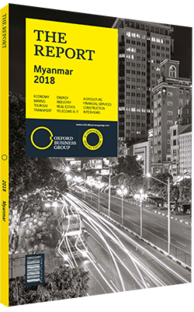U Htun Myint Naing, Chairman, Asia World: Interview

Interview: U Htun Myint Naing
How will the expansion of Yangon International Airport (YIA) benefit the tourism sector and encourage international airlines to add new routes?
U HTUN MYINT NAING: This is an exciting time for the aviation industry in tandem with the country’s ongoing economic expansion and the liberalisation of government policies. Passenger numbers have more than tripled from 1.9m in 2010 to 5.9m in 2017, which indicates that YIA is poised to play a key role in supporting Myanmar’s economic growth into the next decade. The influx of passengers in 2017 represented growth of around 9% on 2016. By looking at the growth trends of Myanmar’s three international airports – Yangon, Nawpyidaw and Mandalay – the YIA emerges as the first point of entry and is thus crucial for the local industry. The expansion of YIA is in line with aviation best practices of having adequate capacity one step ahead of demand, as is the Department of Civil Aviation’s recent completion of its roadmap for the transition from aeronautical information services to aeronautical information management, which will also allow for increased air traffic. Furthermore, the expansion of YIA will allow a handling capacity of at least 20m passengers per year and improve connectivity between terminals. The development of the YIA also attracted international full-service airlines such as Emirates, Malindo Air and Cathay Dragon, all of which have opened new routes to Yangon over the last two years.
What role do you expect YIA to play regionally?
HTUN MYINT NAING: In line with the burgeoning global air travel market, YIA will continue to receive more passengers and air cargo flights, mainly from other countries in the region. The YIA’s route development strategy aims to boost connectivity with neighbouring regions, with a particular focus on the ASEAN market, including secondary cities and destinations within a six-hour flight time. It should also be noted that in recent years, budget air travel has also provided an impetus for people to travel all over the world, as well as in Southeast Asia. Carriers such as Air Asia and Lion Air are leading the way in connecting cities within the region, and Yangon stands to benefit from this. To leverage these opportunities, YIA has been actively expanding the number of its airline partnerships and is exploring new air routes. Today, there are 29 international airlines connecting Yangon to 25 international destinations, and there is a great deal of room for further growth.
In your opinion, what were the benefits of the government’s decision to privatise the management of Myanmar’s international airports?
HTUN MYINT NAING: In recent years, the public-private partnership (PPP) model for airports has gained traction around the world. In Myanmar, investment in infrastructure is crucial for long-term economic growth and inviting the private sector to participate in such projects reduces the pressure these structural investments place on public fiscal and financial resources.
In terms of improving the quality of service, the privatisation of the management of YIA facilitated the introduction of technology to significantly enhance operational efficiencies. For example, the new aviation command centre, coming into operation in the first quarter of 2018, will ensure real time monitoring and assessment of aviation activity. Along with technology, privatisation facilitated the recruitment of qualified international professionals who will play a key role in training the local workforce. Thus, PPPs can facilitate a variety of important projects, from the construction of quality infrastructure to the transference of a wide range of expertise in operation and management.
Lastly, the privatisation of the country’s international airports has created a free, open and competitive market for the Myanmar aviation industry, ensuring that private airports will maintain the highest standard of quality, service and regulatory compliance to meet the varying demands of their passengers and customers.
You have reached the limit of premium articles you can view for free.
Choose from the options below to purchase print or digital editions of our Reports. You can also purchase a website subscription giving you unlimited access to all of our Reports online for 12 months.
If you have already purchased this Report or have a website subscription, please login to continue.

